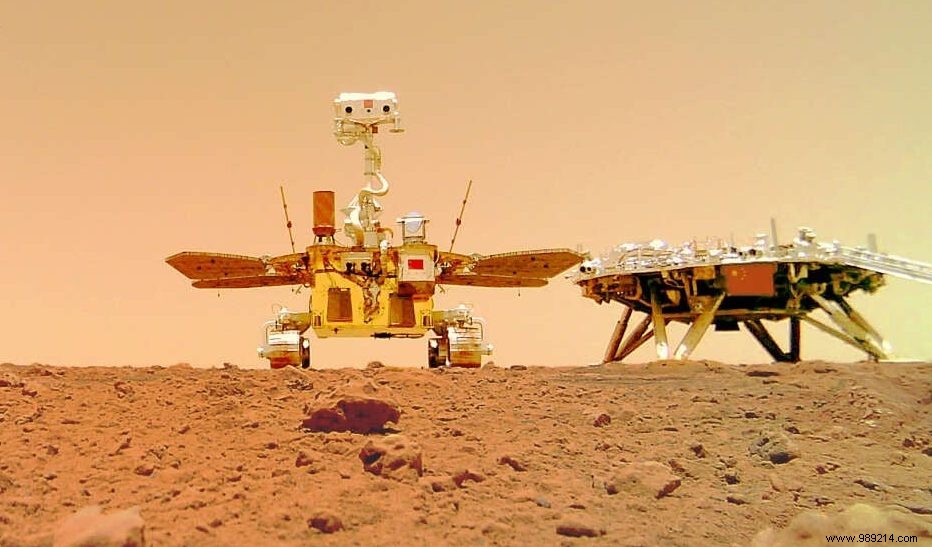NASA is planning a first manned mission to Mars at the end of the 2030s, when SpaceX announces that it can do so before 2026. Between the two comes China, increasingly present on the space scene. The country aims to send its first crewed mission to the Red Planet in 2033. Regular follow-up flights will aim to build a permanently manned base.
China is taking more and more space in the world. Remember that the country, which sent its first taikonaut into space in 2003, distinguished itself last year by bringing to Earth the first lunar samples in forty years. In 2018, China also successfully landed on the far side of the Moon. More recently, a first rover was deposited on Mars, without forgetting the new space station currently in the assembly phase at about 380 kilometers above the Earth.
And China intends to continue its momentum. A few days ago, the Chinese National Space Administration (CNSA) defined the country's main space efforts for the period 2021-2025 as part of a press conference. Lunar exploration, Jovian or collection of samples from an asteroid, the calendar of China in the space field promises to be particularly busy.
During this conference, CNSA Secretary General Xu Hongliang also discussed Mars ambitions, with the development of a sample return mission. But that's not all. According to Reuters, China would also aim to send its first crewed mission there as early as 2033.
And will not be a "one shot". Crewed launches to Mars would indeed also be in 2035, 2037, 2041 and beyond, according to the head of China's top rocket maker, Wang Xiaojun.
Of course, getting humans to Mars doesn't happen overnight. Upstream, China therefore plans to send a probe to study possible settlement areas and robots responsible for building systems allowing the extraction of resources in situ, such as water ice, the generation oxygen and electricity production.
To serve its ambitions, China will also have to develop a way to bring its taikonauts back to Earth.

Finally, like NASA, the country is also aware that repeated trips to the red planet will not be possible using "traditional" means of chemical propulsion. With current technology, it would indeed take about six to nine months to send crews to Mars with a phenomenal amount of thrusters.
This is why, on the American side, we are currently evaluating the viability of nuclear propulsion means (thermal and electric). These options would require much less fuel and make it possible to reach Mars more quickly. A priori, China is also looking into the matter. If successful, Wang Xiaojun assures that the country could complete Earth-Mars round trips in “ a few hundred days ” .